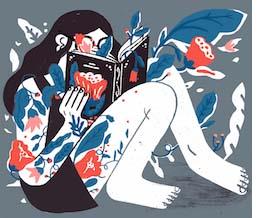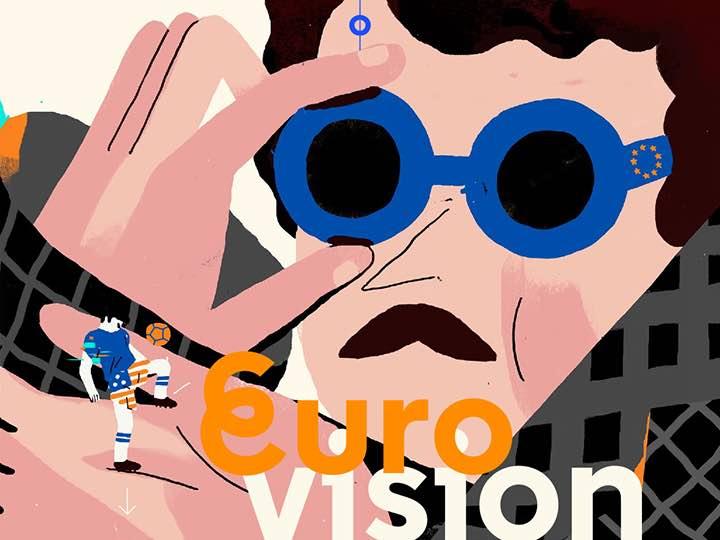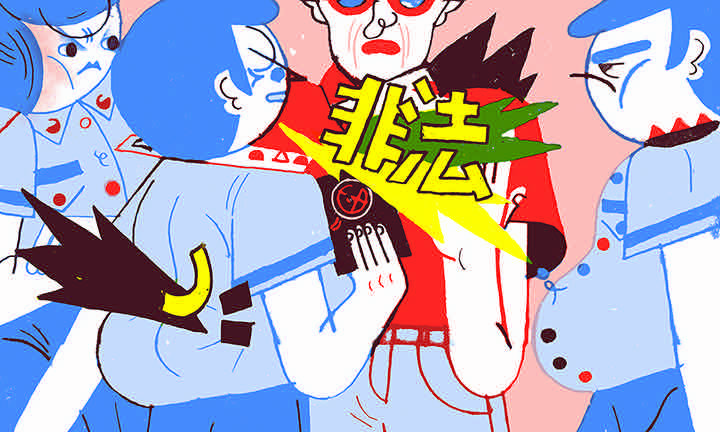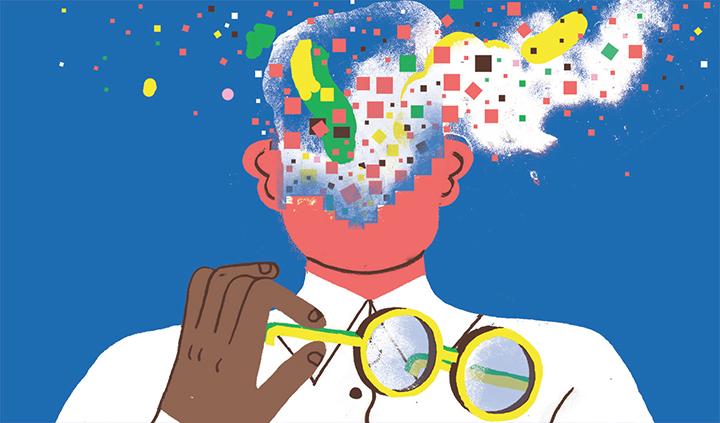The QA: Sarah Mazzetti
Q: Originally from Bologna, what are some of your favorite things about living and working in Milan
A: I've been living in Milan for a couple of years now, and what I like the most about both cities is my relationship to them. I've always had the habit of walking around a lot as a remedy to pretty much any emotional state I felt trapped in, and I tend to create an almost personal relationship with the city, as if the walking was the equivalent of telling a friend about the things happening to you.
So there's no specific site I feel particularly attached to, it's more a matter of atmosphere: the Medieval architecture in Bologna, the palaces in Milan, and the fact that the past is so present in most Italian cities is something very familiar to me; it just feels like home.
Q: Do you keep a sketchbook? What is the balance between the art you create on paper versus in the computer?
A: I'm very untidy, and I'm not able to keep a proper sketchbook, but I do draw a lot (on several sketchbooks, pieces of paper, whatever I find around), not always to create something aesthetically beautiful; most of the time it's a necessary step of my thinking process. For what concerns creating a commissioned piece, I'd say my practice is equally split between paper and screen. I sketch ideas and draw the outline of the illustration on paper, and then color it in Photoshop, using the shapes I've created by hand.
Q: What is the most important item in your studio?
A: My scanner. There's really nothing I'm particularly attached to except for the tools I work with. I like to move and travel whenever I have the chance, and got used to work in almost any kind of environment.
Q: What do you like best about your workspace?
A: My Hebi lamp! I'm ok where I work now, but to be honest, I'm not in that phase of life in which you think about settling down and building your nest. There are other places I want to live in for a while, so I'm not putting much effort in creating the perfect working space. But I do look forward to that moment!
Q: Do you think it needs improvement, if so, what would you change?
A: For sure I'd like to have more space, and I'd like to split it in two parts: one meant for experimenting, printing, doing collage, or whatever I feel like doing very freely, and the other one fairly tidy for the things I have to do on a daily basis, like drawing, writing, elaborating images with my computer. And my dirty secret is that I'd love to have a television.
Q: How do you know when the art is finished?
A: Well, I start with a plan of how my image should look, but then I don't know what actually happens. Sometimes I get there very easily, other times I change the aesthetic I had in mind quite a lot. I can only say that the piece is finished when it's perfect to my eye, and I know without much hesitation when that is. I think that what defines you as professional, more than anything else, is the capacity to take distance from your work, recognize the mistakes and find a solution to fix them.
Q: What makes you happy?
A: Creating something I'm really happy with is always a great feeling. But swimming pools and watermelon are also good.
Q: What was your favorite book as a child?
A: I had a Sleeping Beauty pop-up book that would leave me amazed every time I opened it, so even now, I still remember the forest of brambles and thorns popping out as I turned the page; that was my favorite part.
Q: What is the best book you’ve recently read?
A: The best fairly recent discovery was Stoner by John Edward Williams. It actually came out in the USA in the '60s, but in Italy it was published only in 2012. The author tells of the small details in a downbeat story of William Stoner's life with such grace and love that you can't help but being completely overwhelmed by the narration.
I'm also reading Life is Elsewhere by Milan Kundera, which is of course great and ironic and a bit cruel as Kundera always is. It also tells about the naiveté and egocentrism of a mediocre artist, which I think is an interesting lesson for everyone.
Q: If you had to choose one medium to work in for an entire year, eliminating all others, what medium would you choose?
A: Printing, everything from linocut to screenprinting, to riso.

A: America in the '50s-'60s. I would like to be the lovely, always perfect wife of a doctor or something and spend my time matching my dress with my purse. That's of course the opposite of what I really am, in Europe in 2015, and I'd probably hate it eventually, but I've always been so charmed by that era (and when I say "always" I don't mean "since Mad Men", I mean that my favorite movie when I was 14 was The World of Henry Orient).
Q: What is preoccupying you at the moment?
A: Many things actually. Let's say I'm not an optimist for what concerns the future of our society, and the news doesn’t help. And not scrolling Tumblr either.
Q: What are some of your favorite places/books/blogs/websites for inspiration?
A: Well, I never actively search for inspiration, I guess it's just a matter of absorbing the things you're passionate about and make them emerge in your practice. It's an unconscious process though. That said, Mark Twain's stories are the place where I go to when I lack inspiration for writing or drawing something that should—hopefully—be smart and ironic. For keeping up with what's going on in the industry the website I visit most often is definitely It's Nice That.
Q: What was the [Thunderbolt] painting or drawing or film or otherwise that most affected your approach to art?
A: The graphic design from the '50s/'60s is still my main anchor point, I'm thinking about the work of designers with an illustrative approach so to say, like Lora Lamm, Alexander Girard, Alex Steinweiss, but also about the anonymous art on East-European matchboxes.
Q: What advice would you give a young artist about applying to an art school or college?
A: Try stuff, try everything, get inspiration from anywhere but try to avoid Behance, Pinterest and Tumblr, focus on "creating your own voice", don't think about the market, don't think about creating contacts (for now).
Q: What would be your last supper?
A: Something crazy-expensive in the poshest restaurant in Dubai, please! I don't even care if it's good or not. :)
Sarah Mazzetti is a Milan-based illustrator. She has been creating images for a living since her graduation in 2010 and her work was awarded by a few nice organizations, such as The Society of Illustrators, 3X3 Magazine, It's Nice That, YCN and Computer Arts.
Her clients includeThe New York Times, The New Yorker, Adobe, Eni, PLANSPONSOR, aiCio, Feltrinelli, Mondadori, The Fader, Vice Magazine, It's Nice That, Festival del Film di Roma.





